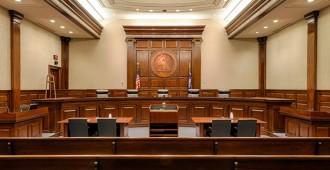
September 1, 2016
PTAB Reversed Based on Non-Analogous Art Theory
Although In re Natural Alternatives LLC (Fed. Cir. August 31, 2016) is not an IPR appeal, it should be of interest to those who care about IPRs and PGRs because it reflects a successful appeal from the Patent Trial & Appeal Board (PTAB) involving the fairly rare issue of non-analogous art.
Natural Alternatives (NA) owns US 6,080,330 (‘330), which claims compositions for deicing roads using less salt and fewer toxic chemicals than have traditionally been used for that purpose. NA licenses ‘330 to various manufacturers of road-deicing supplies. One of NA’s licensees decided to challenge the patent by filing a request for ex parte re-examination, which the PTO granted. Eventually the Examiner rejected all claims as obvious and the PTAB affirmed. NA appealed to the Federal Circuit (CAFC).
There were two “representative” limitations litigated before the PTAB and then the CAFC, and the key limitation in both claims was “desugared sugar beet molasses.” NA discovered that if you mix this particular molasses with any of a number of previously known deicing agents (mostly road salts), you enhance the salt’s deicing effectiveness, such that you get more deicing “bang” for the salt “buck.” This means that you can use less salt per winter, which is good because salt can corrode vehicles, pollute groundwater, etc. Before NA’s discovery, desugared sugar beet molasses was a waste product that was simply thrown away.
The crux of the PTO’s argument for prima facie obviousness was that PL 164018 (Zdzisław) disclosed an antifreeze containing sugar beet molasses (the parties disputed whether this molasses was desugared, but that point is not critical) and a prior art deicing agent (a class of alcohols). The principle difference between Zdzisław’s antifreeze and NA’s claimed composition are that NA’s claimed composition: (1) requires a particular ratio of molasses to deicing agent; and (2) at least some of NA’s claims require salt, not alcohol, as the deicing agent. The Examiner cited US 5,639,319 (Daly), which also used molasses and alcohol but in different ratios than used in Zdzisław. Daly uses the molasses/alcohol mix as a tire ballast (i.e., bulk weight loaded into a truck tire to make it more dense to improve driving on slick surfaces). Then the Examiner cited a study published in Public Works magazine to show that alcohol and road salt achieve essentially the same deicing effect. The PTAB considered that the range of molasses to alcohol ratios in Zdzisław and Daly — combined with the alleged interchangeability between alcohol and salt from Public Works — showed that it was nothing more than routine optimization to adjust the ratio of molasses and road salt to arrive at NA’s claimed deicing composition.
NA argued that it was not proper to combine antifreeze art (Zdzisław) and tire ballast art (Daly) because they are not analogous art fields. The PTAB took the position that both anti-freeze and tire ballast are things that you use in a car in the winter, and this made them part of the same general art field. The CAFC disagreed, citing In re Clay, 966 F.2d 656 (Fed. Cir. 1992). In Clay the PTO had argued that oil storage tanks and oil extraction rigs were all part of the same art field of “petroleum industry,” but the CAFC disagreed, holding that “petroleum industry” was too generic and abstract a way of framing the art fields in question. The panel in the present case similarly considered the things-you-do-to-a-car-in-winter view of analogous art to be too abstract. Because the PTO — which has the initial burden of establishing prima facie obviousness — had not offered a cogent explanation of why Zdzisław and Daly are analogous art, the CAFC held that prima facie obviousness was not established in the first instance, and therefore there was properly no rejection for NA to rebut. Therefore, the PTAB’s judgment was reversed.



































